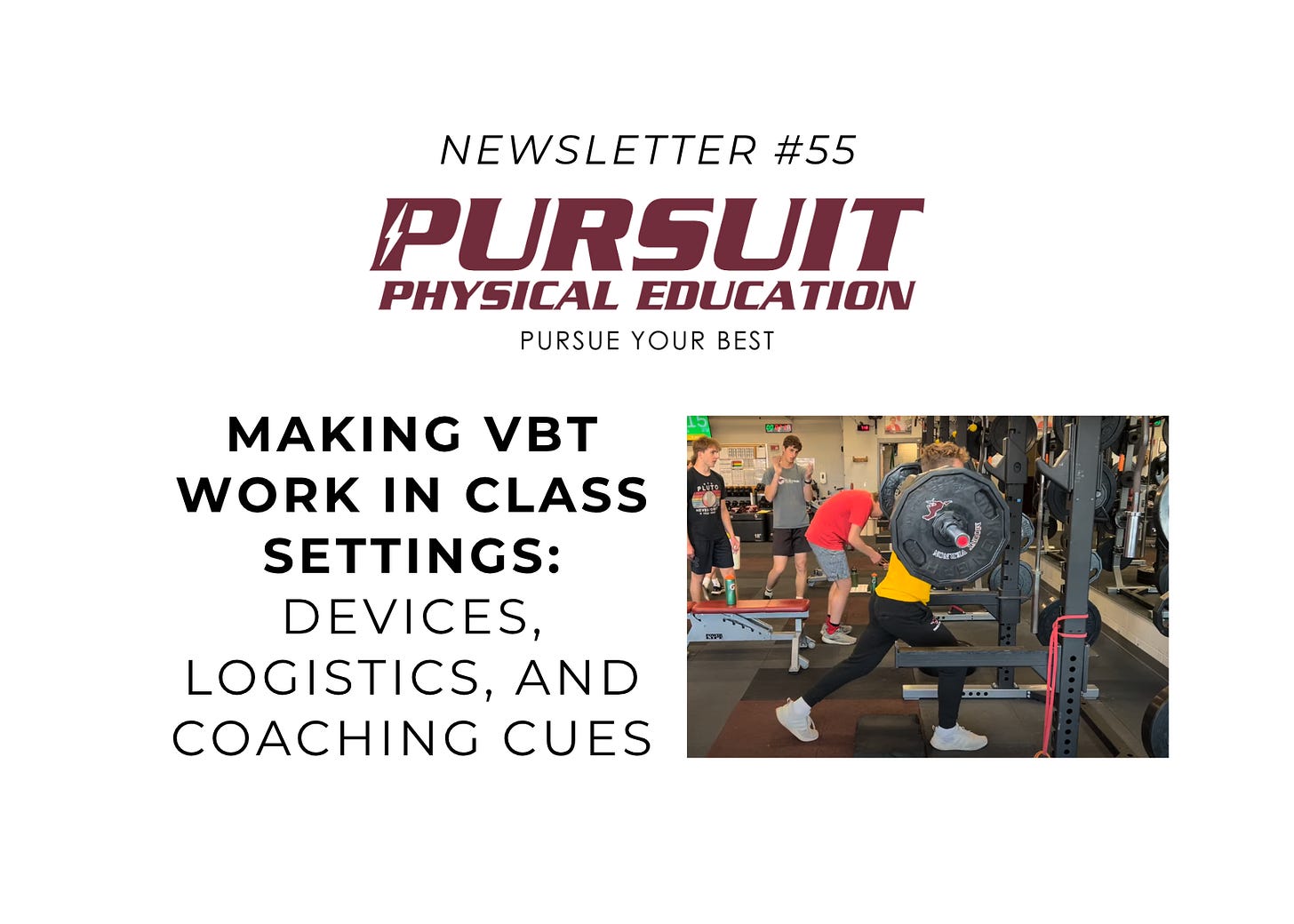Making VBT Work in Class Settings: Devices, Logistics, and Coaching Cues
#55 - Strength & Speed Coaching - Pursuing Your Best ⚡️
Velocity-Based Training (VBT) sounds great… until you have 31 kids, limited space, and 42 minutes.
Then it becomes a question of logistics.
How do I rotate groups efficiently?
Do I need a device for every rack?
How do I keep intent high without making it too complex?
This week, we’re cutting through the chaos of implementing in class. Here’s exactly how we m…




